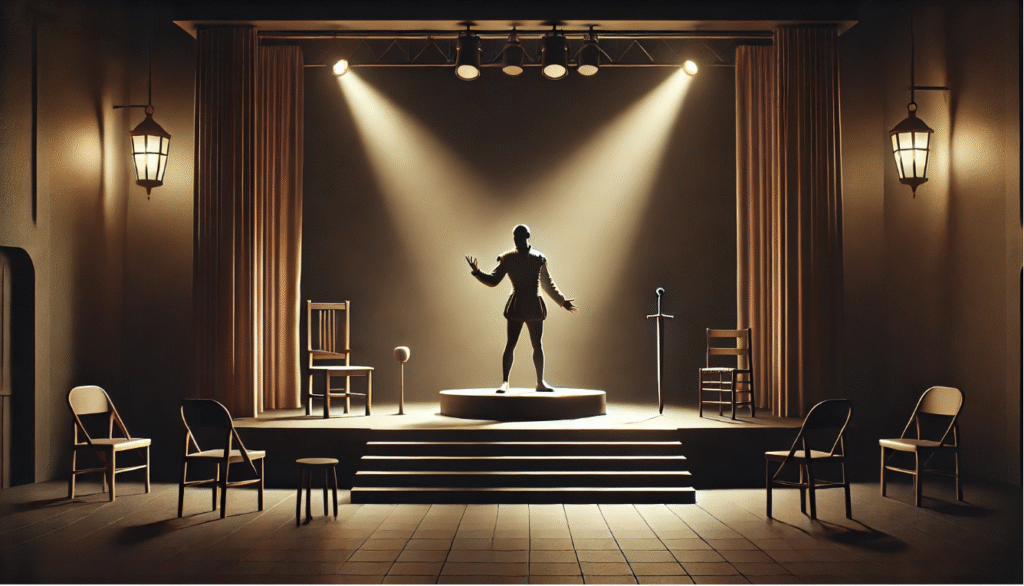
Shakespeare’s Approach to Theatrical Effects: Mastering Dramatic Techniques to Enhance Your Productions
Imagine stepping into a theater where every word spoken, every sound heard, and every light flicker pulls you deeper into the world of the play. That’s the power of theatrical effects—something William Shakespeare mastered like no other playwright. Shakespeare’s approach to theatrical effects wasn’t just about spectacle; it was about creating an emotional journey that captivated his audience from start to finish. 🎭
But here’s the challenge: Many modern productions struggle to replicate the same intensity and immersion that Shakespeare’s original works achieved. Whether you’re a director, actor, or theater enthusiast, finding ways to bring those timeless techniques into contemporary settings can feel daunting. But fear not! In this article, we’ll break down Shakespeare’s most impactful theatrical techniques and show you how to use them to elevate your productions. Ready to master the art of dramatic effects? Let’s dive in! 🚀
Table of Contents
Toggle1. The Role of Theatrical Effects in Shakespeare’s Works
Shakespeare wasn’t just a master of language; he was a genius when it came to using theatrical effects to deepen the emotional impact of his plays. In his time, technology was limited, but that didn’t stop him from creating unforgettable moments on stage. Let’s break down how these effects played a crucial role in shaping his works. 🎭
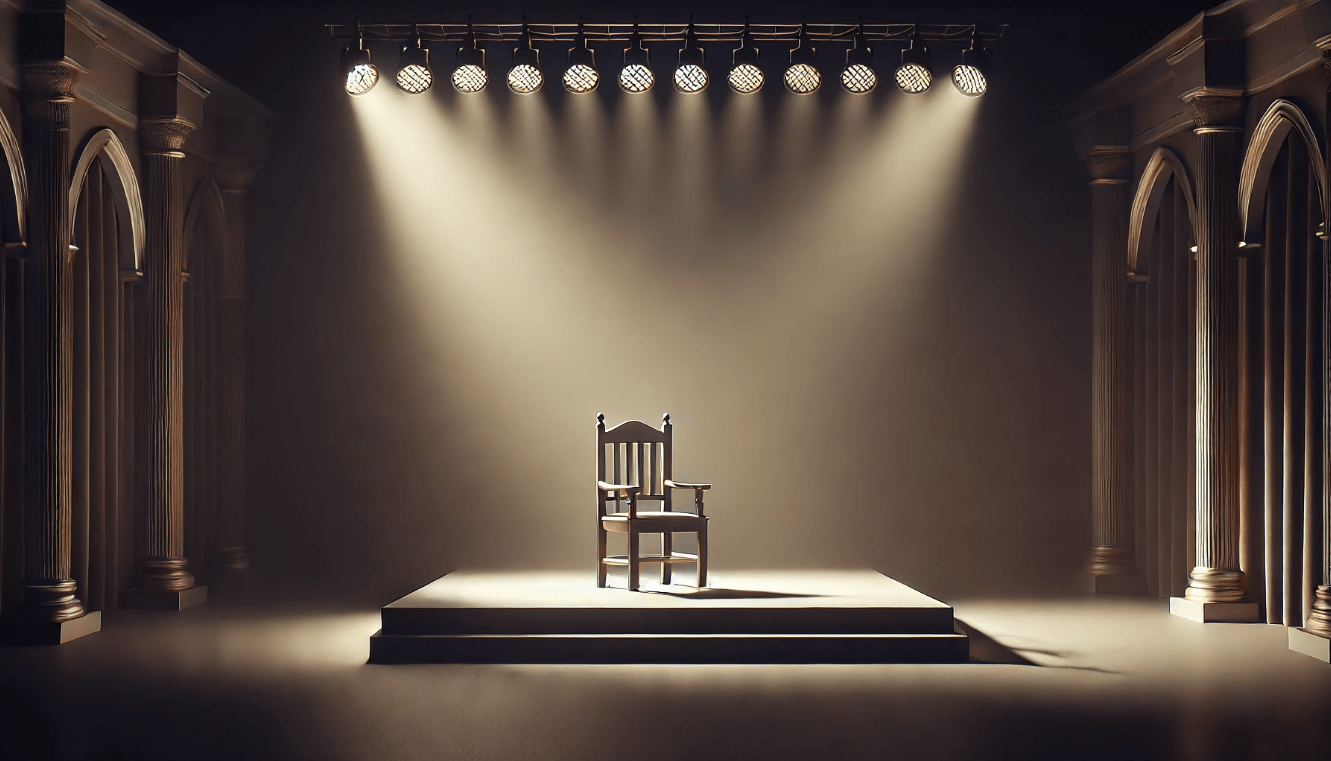
Creating Emotional Impact
Theatrical effects are meant to evoke specific emotions in the audience. Shakespeare understood that the power of suggestion could often achieve more than elaborate visuals. For example, in Macbeth, the infamous sound of a bell tolling signals the arrival of doom, amplifying the tension long before any action takes place. By using sound, lighting, and language, he set the mood, drawing the audience into the emotional world of the characters. 🌑
Heightening Dramatic Tension
One of Shakespeare’s favorite tools for building tension was the use of contrast. He often paired quiet, intimate moments with sudden bursts of action, creating sharp emotional shifts that kept the audience on the edge of their seats. Consider the storm scene in King Lear, where the chaos in nature mirrors the internal turmoil of the characters. This parallel between the external world and the emotional landscape heightens the drama.
Making the Play Come Alive
Shakespeare often relied on language and physicality to immerse his audience in the story. Through vivid descriptions in his scripts, the audience could imagine grand battles, lush landscapes, or magical transformations, even without elaborate sets. For example, in A Midsummer Night’s Dream, the magical forest is painted through words, while movement and gestures brought the fairies and mythical creatures to life.
Building Memorable Moments
Certain scenes in Shakespeare’s plays stand out not because of fancy effects, but because of their emotional resonance. Whether it’s Juliet’s balcony scene in Romeo and Juliet or the ghost’s appearance in Hamlet, these moments are memorable because they strike an emotional chord with the audience. Shakespeare knew how to build anticipation for these pivotal moments through timing and suspense
2. Key Shakespearean Theatrical Techniques
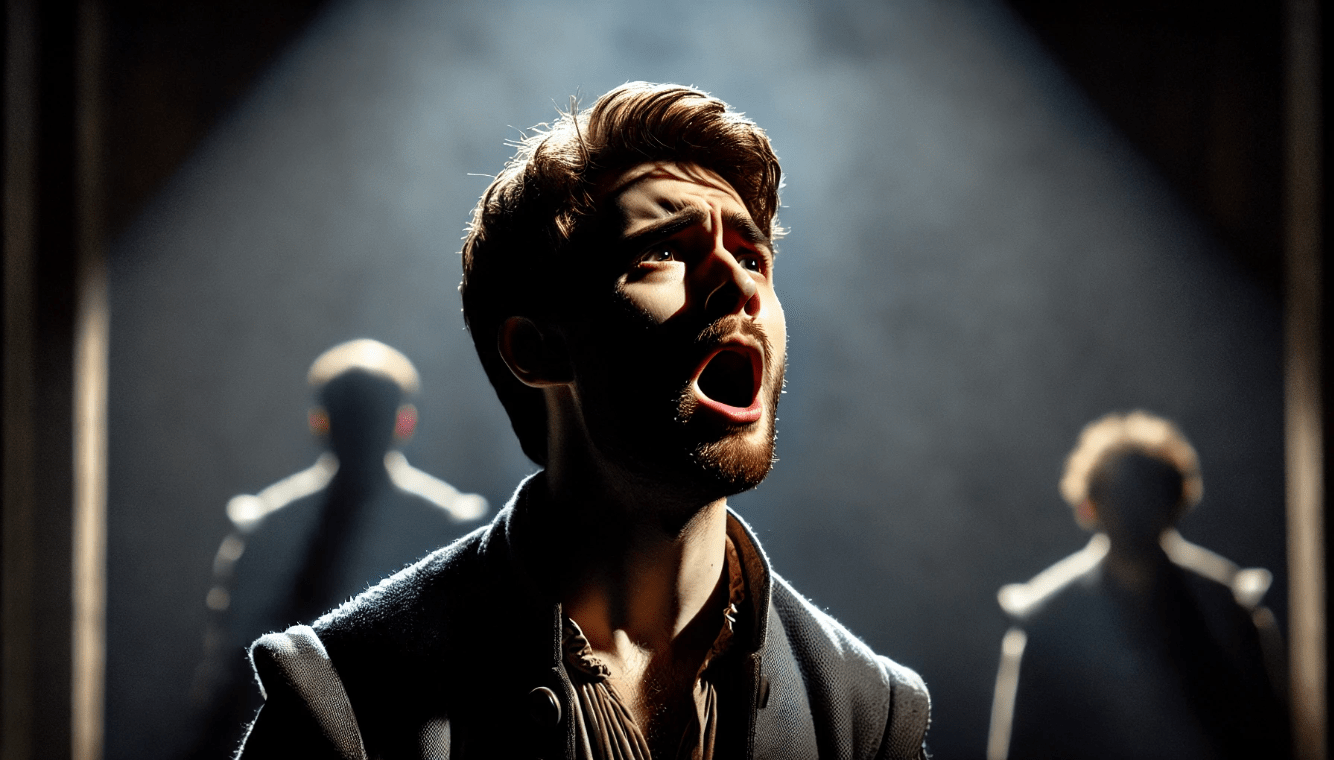
Shakespeare’s brilliance didn’t just lie in his intricate plots or unforgettable characters; it was in how he used theatrical techniques to elevate the drama and engage the audience on multiple levels. These techniques are just as relevant today as they were in Elizabethan theaters. Here are some of the key methods Shakespeare used to captivate his audiences, and how you can apply them to your productions. 🎭
1. Mastering Language for Impact
Shakespeare’s use of language was revolutionary. He knew that every word on stage had the potential to stir emotion, create vivid imagery, and convey deeper meanings.
- Metaphors and Imagery: Shakespeare was a master of using metaphors to evoke powerful images in the minds of his audience. For example, when Macbeth says, “Out, out brief candle! Life’s but a walking shadow,” he’s not just talking about life’s fragility—he’s creating an image of darkness and emptiness. 🌑
Practical Tip: In your production, encourage your actors to focus on the imagery in the text. Ask them how a specific metaphor or image can bring more depth to their performance. - Soliloquies and Monologues: Shakespeare often used soliloquies to give characters emotional depth and insight into their inner thoughts. Hamlet’s “To be or not to be” soliloquy is a perfect example of how language can reveal the complexities of the human condition.
Practical Tip: When directing soliloquies, think about how the actor can use pauses, intonation, and body language to convey the character’s emotional journey. - Wordplay and Puns: Shakespeare loved wordplay. Whether it was through witty puns or double meanings, he used language to add humor or create layers of meaning. Consider the playfulness in Twelfth Night, where characters’ names and dialogue often have hidden layers.
2. Sound, Music, and Rhythm
Shakespeare’s understanding of rhythm and sound effects transformed how his plays were experienced.
- Rhythm and Iambic Pentameter: Much of Shakespeare’s dialogue is written in iambic pentameter, a rhythmic pattern that mimics the natural flow of speech. This creates a musicality that adds gravitas and energy to the text.
Practical Tip: Make sure your actors are comfortable with the rhythm of Shakespeare’s verse. Practice reading the lines with the natural flow to make them sound more fluid and impactful. - Sound Effects: While modern theater has advanced in sound technology, Shakespeare often used simple auditory cues to heighten emotional moments. For example, thunder and lightning in King Lear emphasize the turmoil of the king’s mind. 🌩️
Practical Tip: Use simple sound effects to create atmosphere. A storm, a bell tolling, or the distant cry of a bird can make your scenes feel more immersive. - Music: Music played an important role in setting the tone for Shakespeare’s plays. In The Tempest, for example, magical, ethereal music accompanies the supernatural events onstage.
3. Staging and Set Design
Shakespeare worked in open-air theaters with minimal sets. Yet, his ability to create vivid scenes with just a few props and clever staging was unmatched.
- Minimalist Staging: In his time, elaborate sets weren’t possible, so Shakespeare relied on the power of suggestion. The setting was often created through language and lighting, allowing the audience’s imagination to fill in the blanks.
Practical Tip: Use suggestive staging rather than complex sets. A few well-placed props, combined with lighting and actor movement, can create a world of possibilities. - Symbolic Props: In many of his plays, props weren’t just objects—they were symbols that carried significant meaning. For instance, the skull in Hamlet symbolizes mortality, while the dagger in Macbeth represents guilt.
4. Physical and Emotional Effects on Stage
Shakespeare’s characters didn’t just speak; they moved, and their movements were an essential part of the storytelling.
- Movement and Gesture: The use of physicality in Shakespeare’s plays helped to convey emotions that words couldn’t express. Whether it was a dramatic gesture or a subtle change in posture, movement was key to bringing characters to life.
Practical Tip: Encourage your actors to explore physical gestures that reflect their character’s inner world. A simple hand movement or stance can convey a wealth of emotion. - Emotional Expression: Shakespeare’s characters are known for their intense emotional journeys. From the madness of Lear to the passion of Romeo and Juliet, physicality played a major role in expressing these emotions.
3. How Shakespeare’s Techniques Can Enhance Modern Productions
Shakespeare’s theatrical techniques have stood the test of time because they tap into the fundamental principles of storytelling and human emotion. But how can you apply these classic techniques in today’s world of modern theater? Let’s explore how you can take Shakespeare’s tried-and-true methods and enhance your productions, creating an experience that resonates with contemporary audiences. 🎭✨
1. Adapting Shakespearean Techniques for Modern Audiences
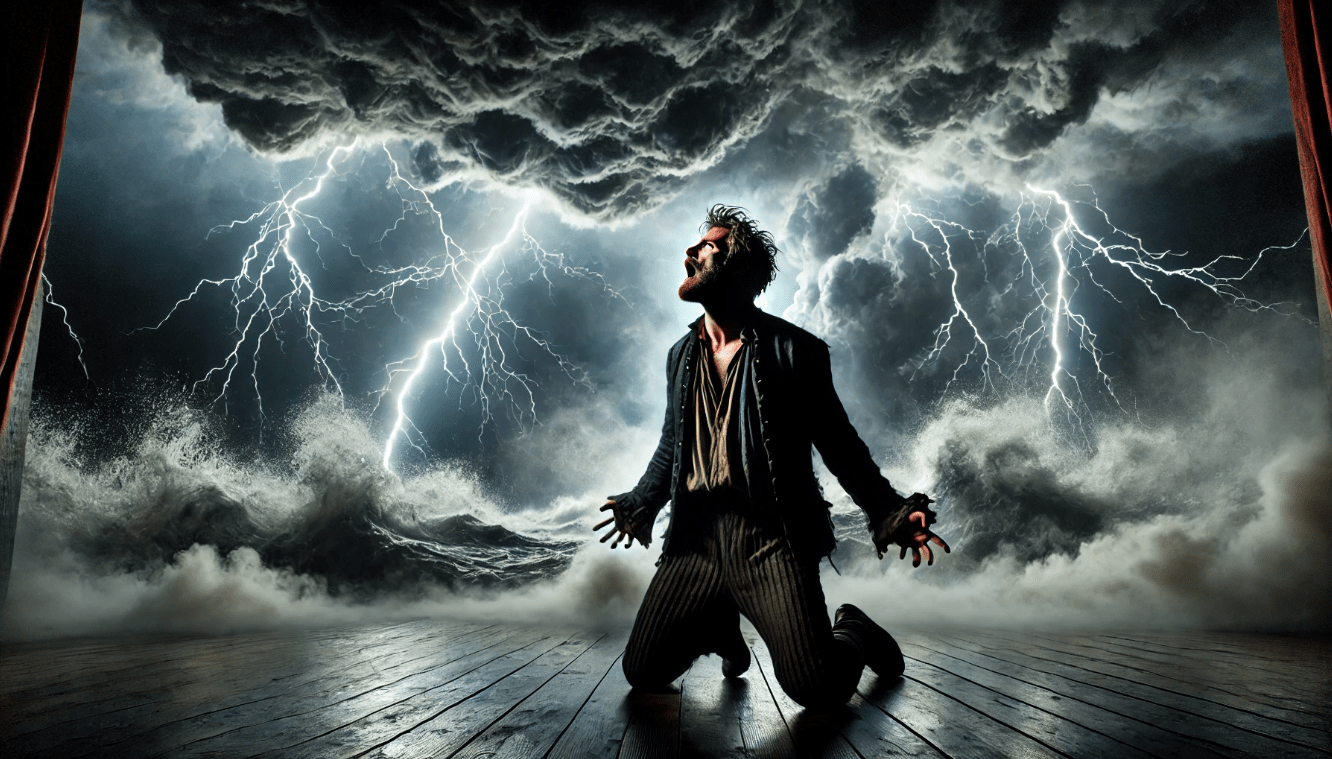
Today’s audiences are used to high-tech visuals, fast-paced narratives, and digital effects. However, Shakespeare’s use of language, sound, and minimalistic staging can still captivate modern viewers when integrated thoughtfully.
- Language and Emotional Connection: While some may feel that Shakespeare’s language is “old-fashioned,” it’s the emotion behind the words that still strikes a chord. Modern productions can make Shakespeare’s language feel fresh by focusing on the raw emotion in his lines, making them relatable.
Practical Tip: Keep the integrity of Shakespeare’s language, but give actors the freedom to interpret lines with emotion that speaks to modern sensibilities. Think of it as translating Shakespeare’s poetry into today’s emotional language. - Minimalist Staging with Modern Touches: Shakespeare often used bare-bones sets to allow the imagination to fill in the gaps. You can apply this principle by creating minimalistic sets that leave space for the audience’s imagination, but incorporate modern touches like projected images or dynamic lighting to enhance the atmosphere. 🌟
Practical Tip: Use lighting and projections to suggest environments. For example, a simple backdrop can transform into a stormy sea with clever lighting and sound, just as Shakespeare did with natural effects.
2. Blending Traditional and Modern Effects for Unique Performances
One of the best ways to keep Shakespeare relevant is by blending traditional techniques with modern effects—especially in a digital age where visual spectacle often takes center stage. This fusion can breathe new life into Shakespeare’s works while maintaining the timeless themes that made them iconic.
- Technology Meets Tradition: While Shakespeare didn’t have access to digital effects, you can use modern technology to enhance his work. Projected imagery, video clips, or even interactive digital elements can bring a Shakespearean play into the 21st century, while staying true to the core emotional impact.
Practical Tip: Think about how projection mapping or augmented reality can highlight key moments of your play, like creating a storm for King Lear or visualizing the dream world in A Midsummer Night’s Dream. - Sound Design and Music Innovation: Shakespeare’s use of music and sound to create atmosphere can easily be adapted using modern technology. Consider blending live music with electronic soundscapes to evoke the emotions in scenes.
Practical Tip: Collaborate with sound designers to incorporate modern music genres (like electronic or ambient) that fit the tone of Shakespeare’s work. You could use electronic beats to heighten suspense or ethereal sounds to create magical moments.
3. Making Shakespeare Accessible Through Modern Storytelling Techniques
Shakespeare’s plays are often long and contain complex narratives. Modern audiences, however, often prefer fast-paced stories. This doesn’t mean you should sacrifice the depth of his work, but it does mean you may need to adjust the pacing.
- Cutting Unnecessary Dialogue: In some cases, cutting extraneous dialogue can help streamline the play without losing its essence. Focus on tightening the action and keeping the central themes intact.
Practical Tip: If you’re adapting a Shakespeare play, consider cutting scenes or lines that feel redundant but preserve the character development and emotional intensity. - Embracing Diversity and New Perspectives: Modern audiences expect to see more diverse representations on stage. Shakespeare’s works are universal and can easily be adapted to include different cultures, backgrounds, and identities.
Practical Tip: Use gender-blind or multicultural casting to reflect the diversity of today’s society while staying true to Shakespeare’s universal themes.
4. Emotional Power Through Simple But Effective Techniques
The beauty of Shakespeare’s theatrical effects lies in their simplicity. He didn’t need elaborate technology to convey deep emotion or transport the audience to a different world. Instead, he relied on the power of words, gestures, and sound to create moments that still resonate with us today.
- Simplicity in Stage Design: Shakespeare often used basic props, simple lighting, and minimalist staging to create larger-than-life moments. You can apply this simplicity by focusing on actor interaction and key symbolic props to bring out the emotional core of your scenes.
Practical Tip: Instead of overwhelming the audience with complex sets, use one or two symbolic props (like a single candle or a cloak) to represent themes like death or betrayal. - Physicality and Gesture: Shakespeare understood the power of movement and gestures in portraying emotion. Even today, these physical cues can help modern actors create impactful performances without relying on high-tech effects.
Practical Tip: Encourage your actors to explore non-verbal communication—how they stand, move, or use their hands to convey emotion can often speak louder than words.
4. Challenges in Implementing Shakespeare’s Theatrical Effects
While Shakespeare’s theatrical techniques are powerful, implementing them in modern productions can be challenging. From understanding historical context to adapting these effects for contemporary audiences, there are several obstacles that directors and actors face. Let’s explore some of these challenges and provide practical solutions for overcoming them. 🎭
1. Understanding the Historical Context
Shakespeare wrote in a time when the theater was much simpler. The absence of advanced technology meant that effects were limited to basic sound, lighting, and minimal staging. Understanding this historical context is key to applying these techniques effectively today.
- Challenge: It can be difficult to recreate the simplicity of Elizabethan theater in a world that’s accustomed to sophisticated sets and digital effects.
- Solution: Focus on subtlety rather than complexity. Instead of relying on technology, embrace suggestive staging, like using props and lighting to hint at a setting or mood. For example, a single candle can evoke a sense of intimacy or foreboding, much like Shakespeare used to convey deeper meanings. 💡
2. Adapting Shakespeare for a Contemporary Audience
Shakespeare’s works were written for Elizabethan audiences who had a different understanding of theater. The language, pacing, and themes can sometimes feel distant for today’s viewers, who are used to faster-paced, visually stimulating productions.
- Challenge: Modern audiences may struggle to connect with Shakespeare’s language, which can feel outdated or overly complex.
- Solution: Update the delivery of lines while maintaining their meaning. Encourage actors to personalize their delivery by focusing on emotion rather than strictly adhering to the rhythm of the verse. Also, consider cutting redundant dialogue to keep the pace moving. This allows the core message to shine without overwhelming the audience with archaic phrasing. 🗣️
3. Balancing Traditional and Modern Techniques
One of the most rewarding aspects of Shakespeare’s techniques is how they can be fused with modern elements. However, striking the right balance between traditional and modern techniques can be tricky.
- Challenge: Combining classic techniques (like soliloquies and simple staging) with modern technology (like projections or special effects) can disrupt the original essence of the play.
- Solution: Use modern techniques to enhance the core elements of the play rather than overshadow them. For example, incorporate projected imagery or sound effects in key moments to emphasize themes but avoid overloading the senses. The goal is to support, not replace, the storytelling. 📽️
4. Maintaining the Emotional Impact
Shakespeare’s plays are known for their emotional depth, and his theatrical effects are often subtle, relying on language and performance to evoke feelings. In modern theater, it’s easy to get distracted by flashy visuals or complex effects.
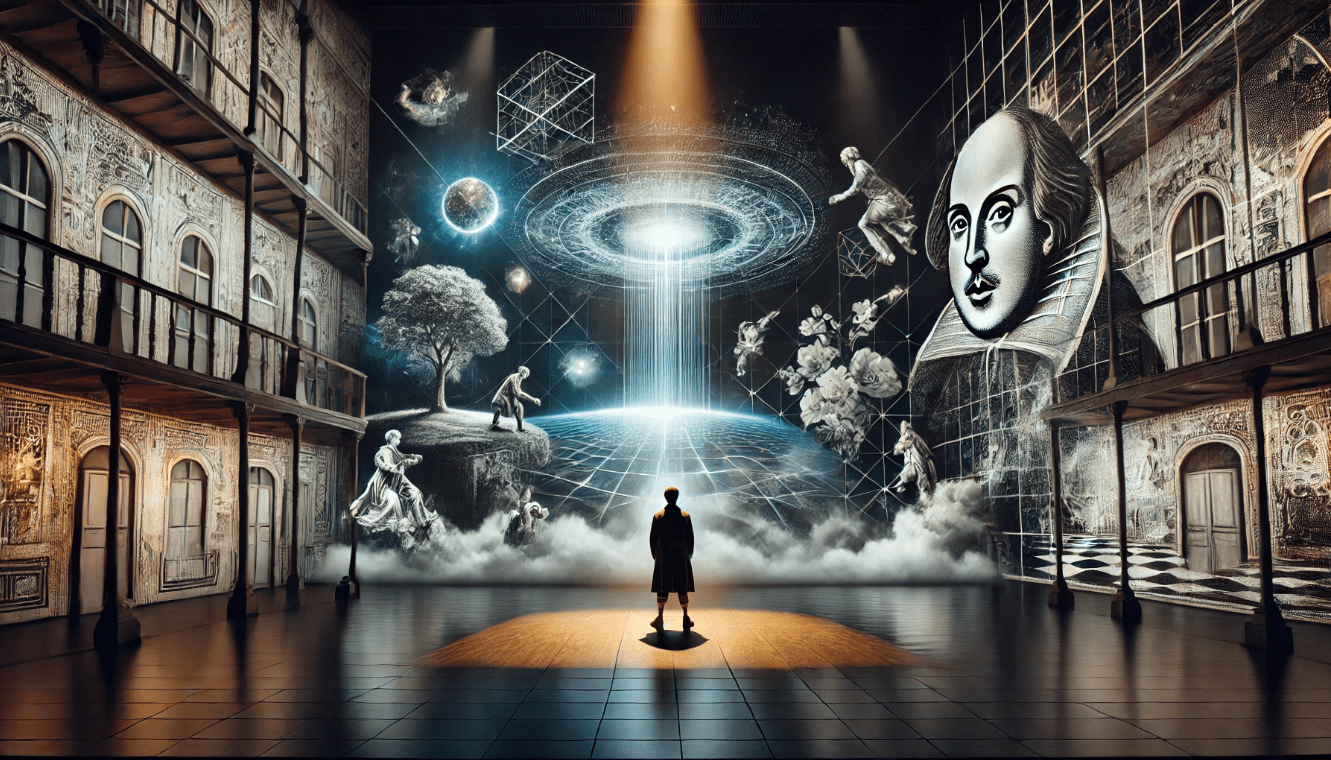
- Challenge: In a world filled with high-tech special effects, it can be hard to maintain the emotional power that Shakespeare conveyed through simpler means.
- Solution: Focus on actor performances and emotional expression. Encourage your actors to fully inhabit their roles and use their bodies, voices, and faces to convey the emotions behind the words. This human connection is at the heart of Shakespeare’s work and remains the most powerful tool for engaging audiences today. 💖
5. Managing Budget and Resources
Not every production has the resources for elaborate staging, high-tech effects, or large ensembles. Shakespeare’s plays were often staged in minimalist settings with limited props and costumes, but today’s productions may have different expectations from their audiences.
- Challenge: Budget limitations may make it difficult to replicate the grandeur often associated with theater, especially when trying to implement complex effects or elaborate sets.
- Solution: Embrace minimalism and focus on creativity. You don’t need a huge budget to create a powerful effect. Think about how you can use lighting, movement, and symbolic props to create memorable moments on stage. For example, a single piece of 5. The Impact of Theatrical Effects on Audience Engagement
Shakespeare’s theatrical effects have a unique ability to pull audiences into the world of the play, making them feel deeply connected to the characters and events unfolding on stage. These effects go beyond just spectacle; they’re about creating an emotional experience that resonates long after the curtain falls. Here’s how Shakespeare’s techniques can engage and captivate your audience. 🎭✨
1. Building Emotional Connections with the Audience
At the heart of every Shakespearean production is a deep emotional connection with the audience. Through carefully chosen theatrical effects, Shakespeare was able to amplify emotions, making moments of love, betrayal, or despair hit harder.
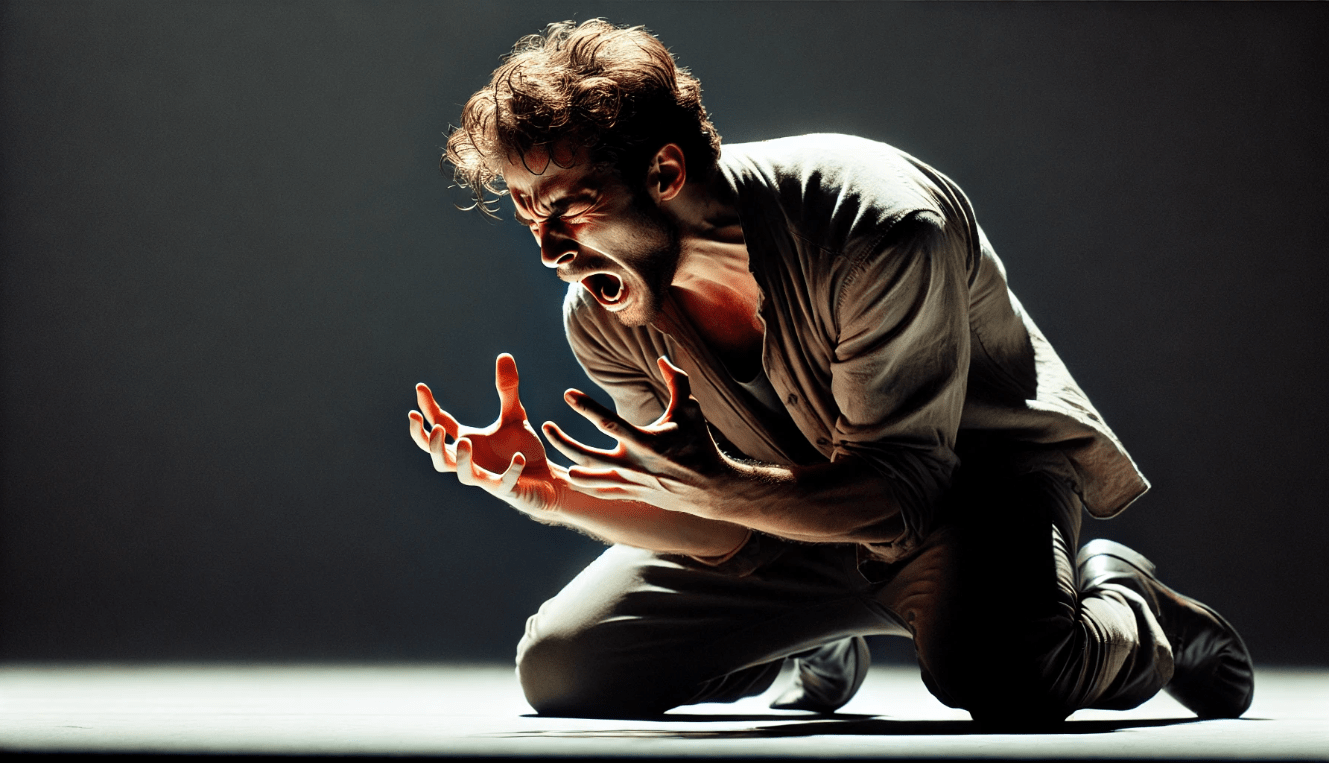
- How it works: Whether through the use of symbolic lighting, evocative language, or strategic sound effects, these techniques draw the audience into the character’s emotional journey. Think of the intensity of King Lear’s madness, heightened by stormy sounds and dark lighting. It’s the combination of these elements that makes the audience feel the tension and anguish. 🌩️
2. Creating Dramatic Tension and Surprise
One of Shakespeare’s signature techniques was the ability to build tension and surprise through subtle effects. By playing with the audience’s expectations—whether through dramatic pauses, unexpected entrances, or sudden shifts in mood—he kept audiences on the edge of their seats.
- How it works: Shakespeare understood that the unexpected had the power to grab attention. For example, in Macbeth, the eerie appearance of Banquo’s ghost creates a jarring moment that forces the audience to confront the reality of Macbeth’s guilt. The ghost’s presence isn’t just visual—it’s a sound effect, lighting cue, and actor’s movement combined to increase the emotional impact. 👻
3. Enhancing the Sense of Immersion
The power of Shakespearean theatrical effects lies in their ability to transport the audience to another world. By blending language, music, and visual elements, Shakespeare created worlds of magic, conflict, and intrigue that felt immediate and real.
- How it works: Shakespeare’s effects weren’t just about creating a spectacle—they were about making the audience feel like they were part of the world on stage. For example, the enchanted forest in A Midsummer Night’s Dream isn’t just a place; it’s brought to life through sound, music, and the actors’ movements, making the audience feel as if they’ve stepped into a mystical realm. ✨
4. Generating Memorable, Lasting Impressions
Certain scenes in Shakespeare’s plays stick with audiences long after the performance ends. Whether it’s the haunting appearance of a ghost, a character’s heart-wrenching soliloquy, or a sudden moment of comedic relief, these moments are made unforgettable through powerful theatrical effects.
- How it works: Shakespeare used dramatic effects to punctuate key moments in the play, making them stand out and leaving a lasting impression on the audience. The ghost in Hamlet, for example, isn’t just a spooky figure; it’s a visual and auditory cue that ties directly into the themes of guilt, revenge, and fate. 🕯️
5. Encouraging Active Audience Participation
Shakespeare’s techniques were designed to engage the audience—not just as passive observers, but as active participants in the story. His effects often blurred the line between the stage and the audience, making them feel directly involved.
- How it works: Shakespeare often played with direct address and audience involvement (think of the actors in A Midsummer Night’s Dream speaking directly to the audience). This sense of inclusion made the performance feel personal and immediate.
- fabric or a simple prop can serve multiple purposes across different scenes. 🎨
6. Practical Steps to Integrate Shakespearean Effects Into Your Productions
Integrating Shakespearean theatrical effects into your modern productions doesn’t require a massive budget or elaborate technology—it’s about focusing on the essence of his techniques and adapting them creatively. Here’s a step-by-step guide to help you bring Shakespeare’s timeless methods into your next performance, no matter the resources available. 🎭
1. Analyze the Script for Opportunities
Before diving into effects, the first step is to carefully analyze the script to identify where theatrical effects will have the greatest impact.
- Look for key moments: Identify emotional peaks, turning points, and climactic scenes in the play that would benefit from heightened effects (e.g., a sudden lighting change for a ghostly appearance in Hamlet or eerie sound effects for the storm in King Lear).
- Focus on symbolism: Look for symbolic props that could be amplified through simple stage elements. For instance, the dagger in Macbeth or the skull in Hamlet can carry immense weight if highlighted properly with lighting or sound.
2. Keep It Simple with Staging
Shakespeare often used minimalist staging, allowing the audience’s imagination to complete the picture. Modern productions can follow this approach with simpler, symbolic sets.
- Use basic props effectively: Instead of elaborate sets, focus on suggesting the environment. A single chair can represent a throne, or a single tree could symbolize a forest.
- Work with lighting: Adjust lighting to create different moods. A dim, soft light could symbolize mystery, while a bright, harsh light could indicate tension or revelation.
3. Emphasize the Power of Language
Shakespeare’s language is the heart of his work, so don’t underestimate the power of the spoken word in your production.
- Highlight emotional delivery: Encourage your actors to focus on the emotion behind Shakespeare’s language. It’s not just about reciting lines—it’s about bringing emotion, intention, and physicality into the words.
- Pacing and pauses: Use pauses strategically to let lines resonate with the audience, allowing time for the impact of the words to settle.
4. Use Sound to Heighten Atmosphere
Sound plays a crucial role in creating atmosphere in Shakespeare’s plays. Whether it’s the haunting echo of a bell or the howling of a storm, sound amplifies the emotion and drama of a scene.
- Incorporate subtle sound effects: Think about using sound effects like thunder, footsteps, or whispers to enhance key moments. For example, the ticking of a clock can build tension, while the soft sound of wind can evoke mystery. 🌬️
- Live music: If possible, incorporate live music to create mood. Shakespeare’s plays were often accompanied by live music, which added another layer of emotional depth to the action on stage.
5. Incorporate Physicality and Gesture
Shakespeare’s actors conveyed a lot of emotion through movement and gesture. Physicality was essential in making the characters’ inner emotions visible to the audience.
- Use deliberate movement: Work with your actors to heighten the physicality of their performances. Whether it’s an intense gaze, a slow movement, or sharp gestures, physical expression can amplify emotional moments.
- Mirroring emotions: Encourage actors to mirror the emotion of the scene through their bodies. In a scene of intense anger, for example, tight, rigid movements can convey restraint, while free-flowing gestures can signify freedom or joy.
6. Plan Key Moments for Impactful Effects
Not every moment in the play requires an effect. Instead, focus on creating memorable moments that the audience will carry with them.
- Build to dramatic reveals: Think about when and where you can introduce an unexpected effect that will create a lasting impression. The sudden appearance of a ghost, a change in lighting, or a shift in music can elevate the drama.
- Don’t overdo it: The key is restraint. Use effects sparingly to maintain their impact. Too many effects can dilute their emotional weight.
Shakespeare’s approach to theatrical effects has stood the test of time because it taps into the core of human emotion and storytelling. His techniques, though simple, are powerful in their ability to create immersive, emotionally charged experiences for audiences. By focusing on language, sound, lighting, and physicality, you can bring these timeless methods into your own productions, enhancing every scene with depth and meaning. 🌟
As you integrate Shakespeare’s techniques, remember that less is often more. The subtlety of his effects—whether through a well-placed sound cue, a shift in lighting, or a powerful moment of silence—can have a profound impact on the audience. With these practical steps, you’ll be able to bring a fresh, engaging approach to any Shakespearean play or modern production, creating a performance that resonates long after the curtain falls.
Frequently Asked Questions (FAQs)
1. What are Shakespeare’s key theatrical effects?
Shakespeare’s theatrical effects primarily include language (such as metaphors and soliloquies), lighting, sound (like music and sound effects), and movement. These elements were used to evoke emotion, create atmosphere, and deepen the audience’s connection to the play. For example, thunder and lightning were often used to heighten the drama in King Lear.
2. How can I use Shakespeare’s language to enhance my production?
Shakespeare’s language is rich in metaphors, imagery, and emotion. To enhance your production, encourage actors to focus on the emotion behind the words, and use pauses to let the weight of the lines resonate. These tools create a deeper emotional connection between the audience and the characters.
3. How can sound effects impact a modern production of Shakespeare?
Sound effects, such as thunder, bells, or whispers, can intensify the atmosphere and build tension. For example, the sound of a bell tolling in Macbeth signals doom and guilt. Integrating subtle sound effects can amplify key moments, creating a more immersive experience for the audience.
4. How can I create dramatic tension using Shakespeare’s techniques?
Shakespeare often built tension by using contrast, like pairing quiet, intimate moments with sudden bursts of action. You can create similar effects in modern productions by carefully timing sound changes, adjusting lighting, and using dramatic pauses to allow moments to breathe before escalating the action.
5. How can I make Shakespeare’s theatrical effects relevant to modern audiences?
While Shakespeare’s effects were designed for Elizabethan audiences, modern productions can adapt them by focusing on universal themes like love, power, and betrayal. Incorporating contemporary staging and technology (like projections or music) can make these effects feel fresh while staying true to the essence of the play.
6. What challenges might I face when using Shakespearean theatrical effects today?
Challenges include balancing traditional techniques with modern expectations, adapting complex language for today’s audience, and working within budget constraints for staging and technology. It’s important to maintain the emotional depth of the original effects while making them accessible and impactful for a modern audience.
7. Can Shakespeare’s theatrical effects be used in non-Shakespearean plays?
Yes! The techniques Shakespeare used, such as powerful language, symbolic props, and sound design, are effective tools for any production. These techniques can add emotional depth, enhance tension, and create memorable moments, regardless of the play’s genre.
8. How can I incorporate physicality and gesture into my Shakespearean production?
Physicality plays a key role in conveying emotion and character traits. Actors should be encouraged to use intentional movement to reflect a character’s inner emotions. Simple gestures, like clenching a fist or a sudden change in posture, can significantly enhance the emotional tone of a scene and make the character’s journey more tangible.
